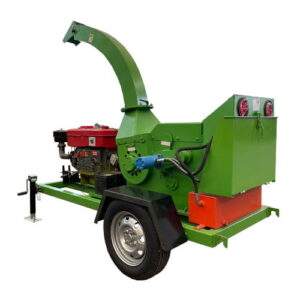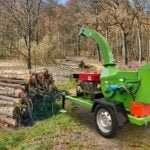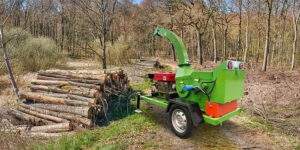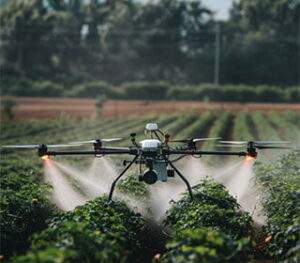How to Choose the Best Wood Chipper for Your Needs
Introduction
Choosing the best wood chipper for your needs can significantly enhance your yard maintenance routine, helping you efficiently manage garden waste and create valuable mulch or compost. With a variety of wood chippers available on the market, it’s essential to understand their features, benefits, and how they align with your specific requirements. This comprehensive guide will walk you through everything you need to know to make an informed decision.
Understanding Wood Chippers
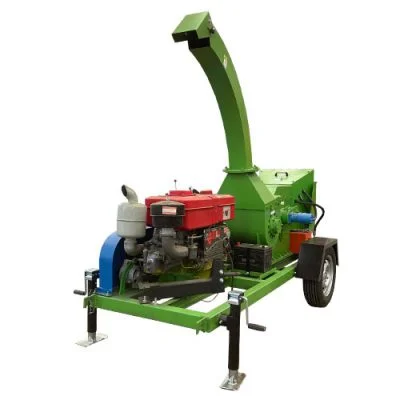
What is a Wood Chipper?
A wood chipper is a powerful machine designed to reduce tree limbs, branches, and other yard debris into small, manageable chips. These chips can be used for various purposes, including mulch, composting, and even biofuel. Wood chippers are commonly used in landscaping, gardening, and agriculture to handle large volumes of organic waste efficiently.
Types of Wood Chippers
There are several types of wood chippers, each with distinct features and advantages:
Electric Wood Chippers: Ideal for residential use, these chippers are lightweight, easy to operate, and require minimal maintenance. They are perfect for handling small to medium-sized branches and yard debris.
Gas-Powered Wood Chippers: Suitable for larger properties and heavy-duty tasks, gas-powered chippers offer more power and capacity. They can handle thicker branches and larger volumes of waste but require more maintenance.
PTO Wood Chippers: Powered by a tractor, these chippers are designed for large-scale agricultural use. They are highly efficient and capable of processing substantial amounts of material.
Drum and Disk Wood Chippers: Drum chippers are known for their high capacity and speed, making them suitable for industrial applications. Disk chippers, on the other hand, are more versatile and can handle a variety of materials with precision.
Factors to Consider When Choosing a Wood Chipper
Power Source
The power source of a wood chipper plays a crucial role in its performance and suitability for specific tasks:
- Electric Wood Chippers: Best for small to medium-sized yards with light debris. They are quieter, environmentally friendly, and require less maintenance.
- Gas-Powered Wood Chippers: Ideal for larger properties with heavy-duty needs. They offer more power and can handle thicker branches but are noisier and require regular maintenance.
- PTO Wood Chippers: Suitable for farms and large estates where a tractor is available. They provide high efficiency and can handle significant volumes of material.
Capacity
The capacity of a wood chipper refers to the maximum diameter of branches it can process. Choosing a chipper with the appropriate capacity ensures optimal performance and longevity of the machine.
- Small Capacity (Up to 2 inches): Suitable for residential use and light yard debris.
- Medium Capacity (2 to 4 inches): Ideal for medium-sized properties and moderate yard waste.
- Large Capacity (4 inches and above): Best for large properties, farms, and commercial use where heavy-duty processing is required.
Chipping Mechanism
The chipping mechanism determines how the wood chipper processes material:
- Drum Chippers: High capacity and speed, suitable for industrial use.
- Disk Chippers: Versatile and precise, suitable for various materials and applications.
- Screw Chippers: Often used in small electric models, ideal for light residential use.
Mobility and Portability
Consider the mobility and portability of the wood chipper based on your usage requirements:
- Stationary Chippers: Ideal for fixed locations with heavy-duty needs.
- Portable Chippers: Equipped with wheels or hitches for easy transportation around your property.
Safety Features
Safety is paramount when operating a wood chipper. Look for models with the following safety features:
- Automatic Shutoff: Stops the machine if it becomes overloaded or jammed.
- Safety Locks: Prevents accidental startups.
- Feeding Mechanism: Designed to minimize the risk of injury during operation.
Features of Wood Chipper
| Feature | Description |
|---|---|
| Chipper type | Electric or gas-powered |
| Chipping capacity | The maximum diameter of wood that the chipper can handle |
| Engine power | The power of the engine, measured in horsepower (HP) |
| Cutting system | The type of cutting system, such as disc or drum |
| Feed chute | The size and shape of the feed chute |
| Discharge chute | The size and shape of the discharge chute |
| Wheels and towing | The type of wheels and towing system |
| Safety features | The safety features, such as a kill switch and a hopper guard |
| Price | The price of the chipper |
How to Use a Best Wood Chipper Safely
Preparation
- Read the Manual: Familiarize yourself with the manufacturer’s instructions and safety guidelines.
- Wear Protective Gear: Always wear safety goggles, gloves, and ear protection.
- Inspect the Chipper: Check for any damage or loose parts before use.
Operation
- Proper Feeding: Feed branches and debris into the chipper slowly and steadily.
- Avoid Overloading: Do not exceed the chipper’s capacity to prevent jams and damage.
- Maintain a Safe Distance: Keep a safe distance from the feeding chute and discharge area.
Maintenance
- Regular Cleaning: Clean the chipper after each use to remove debris and buildup.
- Sharpen Blades: Ensure the blades are sharp for optimal performance.
- Check Fluids: For gas-powered chippers, regularly check and replace oil and fuel.
Common Wood Chipper Problems and Solutions
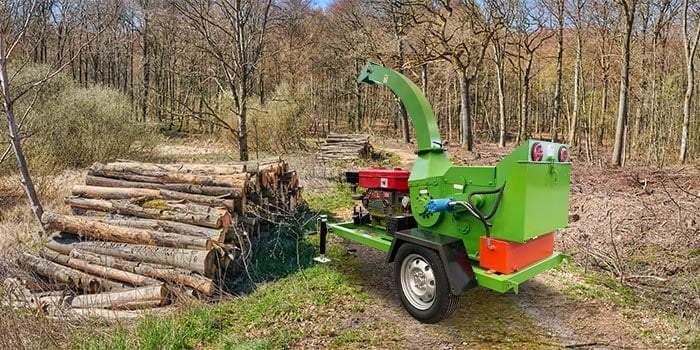
Jamming
- Cause: Overloading or feeding inappropriate materials.
- Solution: Clear the jam safely and ensure you feed suitable materials within the chipper’s capacity.
Dull Blades
- Cause: Regular use over time.
- Solution: Sharpen or replace the blades as needed.
Engine Issues (Gas-Powered Chippers)
- Cause: Poor maintenance or old fuel.
- Solution: Regularly maintain the engine and use fresh fuel.
Conclusion: Best Wood Chipper
Selecting the best wood chipper for your needs involves considering various factors such as power source, capacity, chipping mechanism, mobility, and safety features. By understanding these aspects and comparing popular models, you can make an informed decision that enhances your yard maintenance routine. Whether you opt for an electric, gas-powered, or PTO wood chipper, investing in the right equipment will ensure efficient and effective management of yard waste, contributing to a healthier and more beautiful garden.
FAQ
What is the ideal wood chipper for small residential yards?
For small residential yards, an electric wood chipper with a capacity of up to 2 inches is ideal due to its ease of use, low maintenance, and environmental friendliness.
How often should I maintain my wood chipper?
Regular maintenance should be performed after each use, including cleaning and inspecting for damage. For gas-powered models, check and replace oil and fuel as needed.
Can I use a wood chipper to process wet wood?
It is generally recommended to process dry wood, as wet wood can cause jams and reduce the efficiency of the chipper. Some heavy-duty models may handle wet wood, but it’s best to check the manufacturer’s guidelines.
What safety precautions should I take when using a wood chipper?
Always wear protective gear, read the manual, maintain a safe distance from the machine, and follow proper feeding procedures to ensure safe operation.
How do I choose between an electric and gas-powered wood chipper?
Consider your yard size, the volume of debris, and your budget. Electric chippers are suitable for small to medium yards with light debris, while gas-powered chippers are better for larger properties and heavy-duty tasks.

